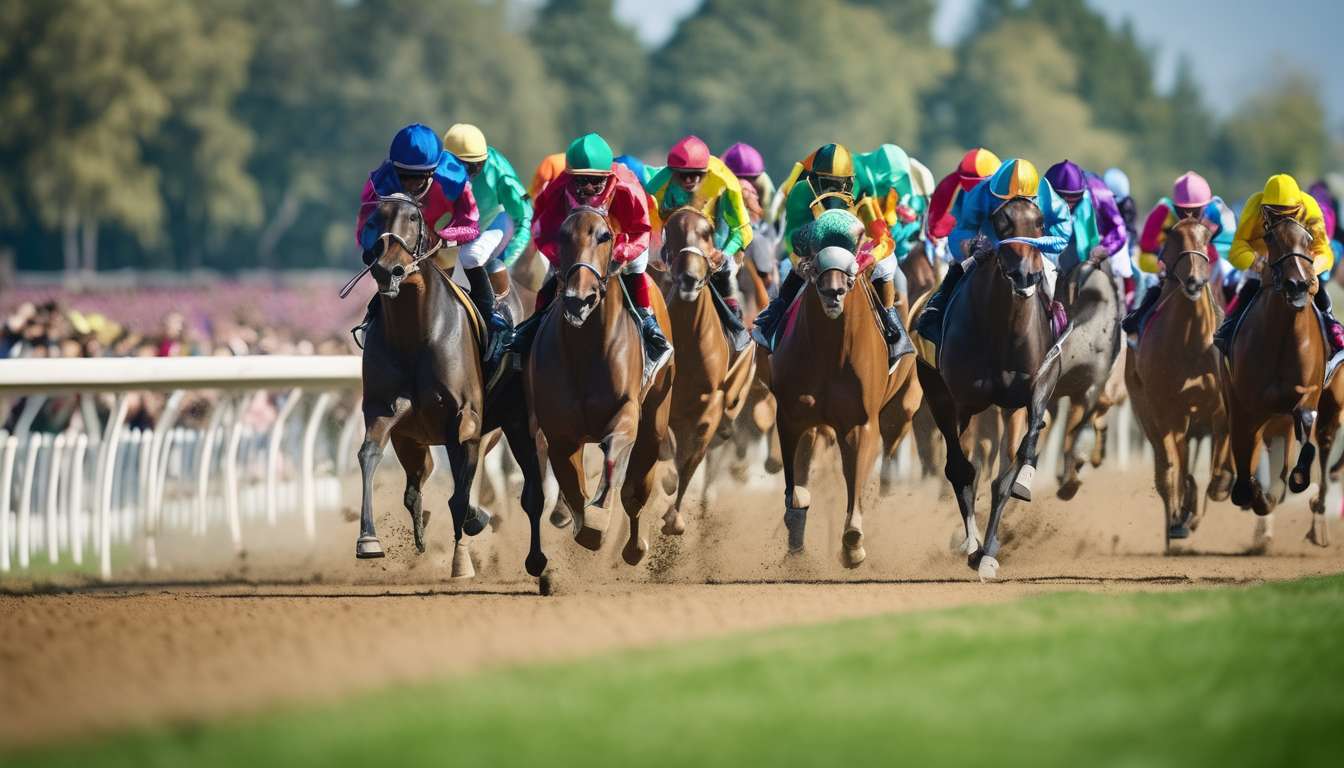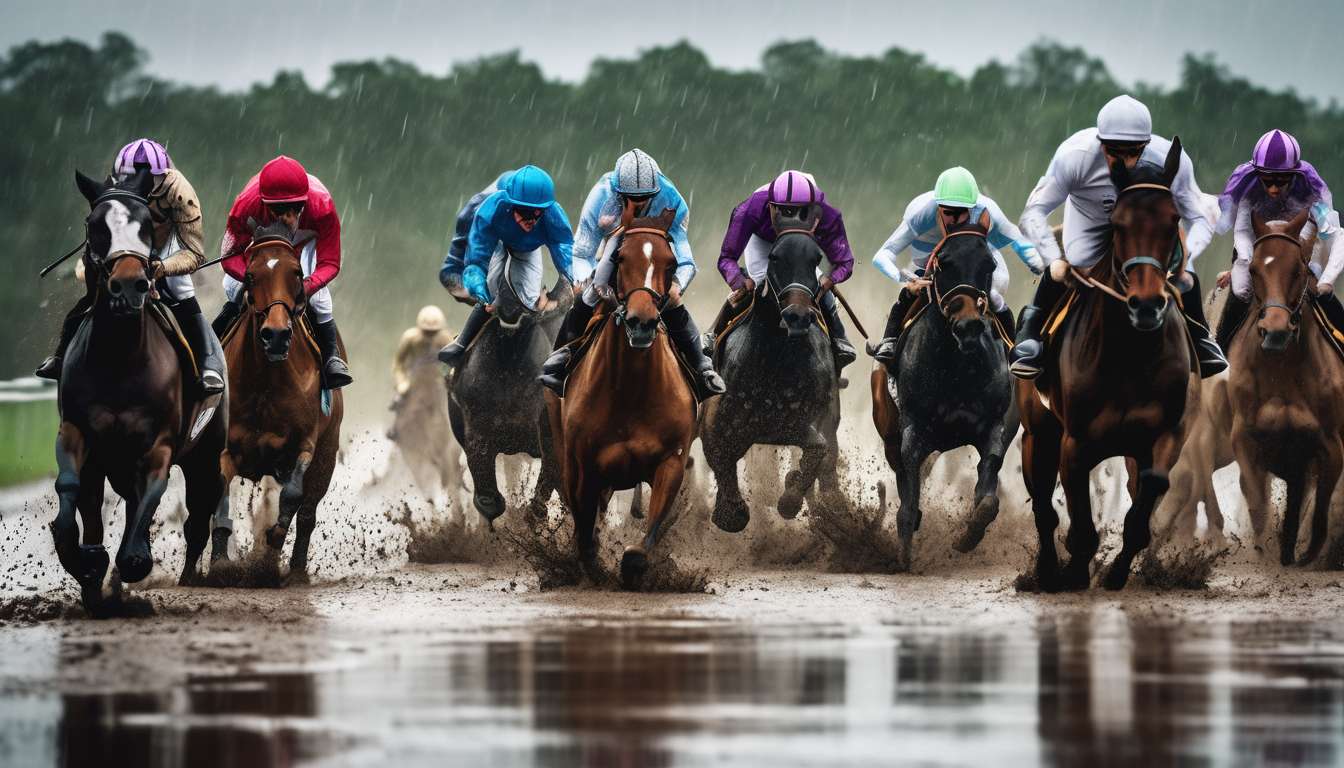In the world of horse racing, enthusiasts and experts are often captivated by numerous theories that promise to reveal the secrets of the track and help in selecting the winning horse.
These theories range from age-old beliefs handed down through generations to modern statistical analyses. As avid followers and participants of this exhilarating sport, we have decided to put these popular theories to the test.
In this article, we explore six of the most talked-about horse racing theories:
-
Theories of Horse Pedigree: Examining the lineage and genetic advantages that may influence a horse’s performance.
-
Jockey Impact Theory: Assessing how much a jockey’s experience and skill affect the race outcome.
-
Track Condition Influence: Analyzing how different track conditions might favor certain horses over others.
-
Age and Performance Theory: Understanding the relationship between a horse’s age and its racing capabilities.
-
Betting Market Movements: Investigating whether fluctuations in betting odds can indicate a potential winner.
-
Speed Figures and Timing: Utilizing statistical data to evaluate a horse’s past performances and predict future success.
By examining their origins, the logic behind them, and their validity today, we aim to determine whether these theories hold water or are merely myths sustained by the excitement of racing.
Join us on this investigative journey as we seek to provide clarity and understanding to the theories that shape our beloved sport. Through our collective knowledge and expertise, we hope to bring new insights into the fascinating world of horse racing.
Horse Pedigree Analysis
When analyzing horse pedigree, the focus is on understanding the genetic lineage to predict racing potential. By examining the ancestry, we can identify traits such as:
- Stamina
- Endurance
- Speed
These traits are crucial for success on the track. Looking at the pedigree helps us see if there’s a pattern of champions, which can be a strong indicator of future performance.
As fellow enthusiasts, we know how exciting it is to uncover these connections. It’s like piecing together a puzzle that could lead to a winning horse. We often discuss how the right combination of lineage and a skilled jockey can make all the difference. The jockey’s ability to harness a horse’s speed and navigate the race effectively is essential.
Additionally, we consider speed figures, which help us quantify a horse’s past performances. These figures are invaluable when combined with pedigree analysis because they give us a clearer picture of potential and consistency.
Together, these elements create a sense of belonging in a community passionate about horse racing.
Jockey Impact Evaluation
In evaluating a jockey’s impact, we focus on their strategic skills and decision-making abilities during a race. While a horse’s pedigree is crucial, the jockey’s influence can turn the tides of a race.
It’s not just about speed figures or the horse’s lineage; a jockey’s ability to:
- Assess the race’s dynamic
- Position the horse optimally
- Read the field
- Adapt to sudden changes
- Communicate with the horse
These subtle nuances can make or break a race.
As a community that cherishes the thrill of horse racing, we recognize that our shared passion is ignited by these dynamic interactions. When a jockey understands a horse’s pedigree and harnesses its potential with tactical precision, it elevates the spectacle for us all.
This synergy between horse and jockey is what captivates us and keeps us coming back to the racetrack, united in our love for the sport.
Track Condition Assessment
Understanding track conditions is crucial as it directly influences race outcomes and our betting strategies. The track’s surface—whether dirt, turf, or synthetic—plays a significant role in shaping race dynamics.
Our community of racing enthusiasts recognizes that:
- Horses’ pedigrees often indicate their performance potential on specific track types.
- Some bloodlines thrive on wet tracks.
- Others excel on firm ground.
Jockey experience is another critical factor in assessing track conditions. A skilled jockey can adapt to changing conditions, optimizing the horse’s performance. Their ability to:
- Judge speed figures
- Adjust strategy on the fly
is invaluable.
Speed figures provide concrete data to compare past performances under similar conditions. They serve as a compass, guiding our bets toward likely winners.
By factoring in track conditions, pedigree, and jockey expertise, we collectively enhance our understanding and improve our chances of success at the races.
Age vs. Performance Study
Age and Horse Racing Performance
Age often plays a crucial role in a horse’s racing performance, affecting stamina, speed, and overall competitiveness.
-
Younger Horses: Often boast higher speed figures due to their youthful energy and peak physical condition.
-
Older Horses: Can surprise us with their wisdom and experience, often translating into strategic race execution.
Pedigree and Age
In our community, we frequently discuss how a horse’s pedigree intertwines with age, influencing its potential.
-
A strong lineage may grant a horse the genetic advantages needed to maintain or even enhance performance over time.
-
Thus, age alone doesn’t determine a horse’s success; pedigree is an essential factor we must consider.
Jockey’s Expertise
Furthermore, the jockey’s expertise plays a significant role in maximizing a horse’s capabilities as they age.
-
A skilled jockey, attuned to a horse’s strengths and limitations, can adjust strategies to optimize speed figures regardless of age.
-
This ensures that both horse and rider belong at the top of the competition.
Betting Market Investigation
The Thrill of Horse Racing Betting
As a community of bettors, we recognize that the excitement of horse racing extends beyond the horses themselves. Understanding how the betting market interprets and reacts to various factors can enhance our connection to the sport.
Key Factors Influencing Betting Markets:
-
Pedigree:
A horse’s lineage plays a significant role in determining market odds. Bettors often place their trust in a well-bred horse, expecting it to perform like its successful ancestors. -
Jockey’s Skill and Reputation:
The expertise of a seasoned jockey can significantly influence market perceptions. A skilled jockey can make all the difference in a tight race, often swaying the odds in their favor. -
Speed Figures:
These numbers quantify a horse’s past performances and provide crucial insights into its ability to compete. By analyzing speed figures, we can make informed decisions, enhancing our shared experience in the betting world.
Conclusion
By understanding these elements, we deepen our sense of camaraderie and feel more empowered in our betting decisions. This knowledge not only connects us to the sport but also to each other as we navigate the thrilling world of horse racing.
Speed Figures Examination
To truly grasp a horse’s potential on the track, we must delve into the intricacies of speed figures and their impact on performance analysis. Speed figures offer a quantifiable measure of a horse’s racing capability, allowing us to compare performances across different tracks and conditions. They bridge the gap between raw talent, found in a horse’s pedigree, and the strategic acumen displayed by the jockey.
When we evaluate speed figures, we’re not just looking at a single race in isolation. Instead, we consider several factors:
- The horse’s lineage, identifying traits inherited from their pedigree that might influence stamina, speed, or temperament.
- The role of the jockey, whose experience and tactics can effectively harness the horse’s inherent abilities on race day.
By analyzing speed figures alongside pedigree and jockey performance, we’re able to gain a deeper understanding of a horse’s racing prowess.
This approach fosters a sense of community among enthusiasts, uniting us in our shared passion for the sport.
Historical Theory Origins
Throughout history, countless theories have emerged to explain the myriad factors that contribute to a horse’s performance on the racetrack. As horse racing enthusiasts, we share a collective fascination for understanding what truly makes a champion.
Pedigree
One of the earliest theories revolves around pedigree. Breeders and bettors alike have long believed that a horse’s lineage plays a crucial role in its racing potential. By tracing bloodlines, we can uncover the inherited traits that might give a horse an edge.
Jockey’s Impact
Another theory that has stood the test of time focuses on the jockey’s impact. We recognize that the skill and strategy of the jockey can significantly influence race outcomes. The bond between horse and rider often becomes a pivotal aspect of success.
Speed Figures
In more recent history, speed figures have become a vital tool. These numbers offer a quantitative method to compare performances across different races and conditions.
As we delve into these historical origins, we find a tapestry woven with tradition and innovation.
Validity in Modern Racing
In today’s racing landscape, we continuously evaluate which historical theories still hold water and adapt them to align with modern advancements. We want to ensure we’re making informed decisions that resonate within our community of enthusiasts.
Pedigree remains a cornerstone; understanding a horse’s lineage helps predict potential, but it’s not the sole factor.
Jockey expertise plays a crucial role. A skilled jockey can significantly influence outcomes, using experience and intuition to navigate races effectively.
Speed figures have revolutionized our approach, offering quantifiable data that enhances our insights. They provide a clearer picture of a horse’s performance, allowing us to compare competitors objectively. While these figures aren’t infallible, they’ve become indispensable tools.
Together, pedigree, jockey expertise, and speed figures create a comprehensive framework for assessing a horse’s potential. As a community, we embrace these elements, understanding their role in our shared passion.
We strive to balance tradition with innovation, ensuring our strategies remain relevant and effective in modern racing.
What are the psychological factors that influence a horse’s performance during a race?
Psychological Factors in Horse Racing Performance
When it comes to a horse’s performance during a race, numerous psychological factors play a crucial role. Elements such as stress, confidence, and temperament can significantly impact how a horse performs on race day.
Key Psychological Elements:
- Stress: High stress levels can negatively affect a horse’s performance, causing anxiety and distraction.
- Confidence: A confident horse is likely to perform better, exhibiting greater focus and determination.
- Temperament: The horse’s natural disposition can influence how it handles the pressures of racing.
Strategies for Enhancing Performance:
Understanding these psychological aspects can help trainers and jockeys better prepare the horse for optimal performance. By addressing these factors and creating a positive environment, we can enhance the horse’s mindset and ultimately improve its performance on the track.
- Reducing Stress: Implement calming techniques and ensure the horse is familiar with the race environment.
- Building Confidence: Use positive reinforcement and consistent training routines.
- Managing Temperament: Tailor training and care practices to suit the individual horse’s disposition.
By focusing on these areas, trainers and jockeys can significantly influence a horse’s psychological readiness and overall success in racing.
How do weather conditions on the day of the race affect the outcome?
When we look at how weather conditions impact the outcome of a race, we consider several factors:
- Track Conditions: Rain can result in a muddy track, affecting a horse’s speed and stamina.
- Visibility: Poor visibility can hinder a jockey’s ability to navigate the course effectively.
- Horse Performance: Wind can impact a horse’s ability to maintain a steady pace.
Understanding how weather influences races helps us make more informed decisions regarding:
- Betting: Assessing how weather conditions could affect race outcomes.
- Training: Adapting training strategies to prepare horses for different weather scenarios.
By considering these factors, we can better anticipate and respond to weather-related challenges in racing.
What role do race-day medications play in horse racing, and how are they regulated?
Race-day medications are substances given to horses on the day of a race with the intent to enhance performance or address health concerns.
They significantly impact horse racing outcomes and are subject to regulation to ensure fair competition and horse welfare.
Regulations for these medications vary by jurisdiction but typically focus on:
- Preventing doping.
- Ensuring the safety and integrity of the sport.
Adherence to these regulations is crucial for maintaining the credibility and fairness of horse racing.
Conclusion
In conclusion, testing popular horse racing theories revealed mixed results.
Influential Theories:
- Track conditions
- Jockey impact
Less Reliable Theories:
- Pedigree analysis
- Age performance
The investigation into the betting market and the examination of speed figures displayed varying degrees of predictability.
Overall, it’s evident that a combination of factors contributes to success in horse racing, highlighting the complexity of the sport.









